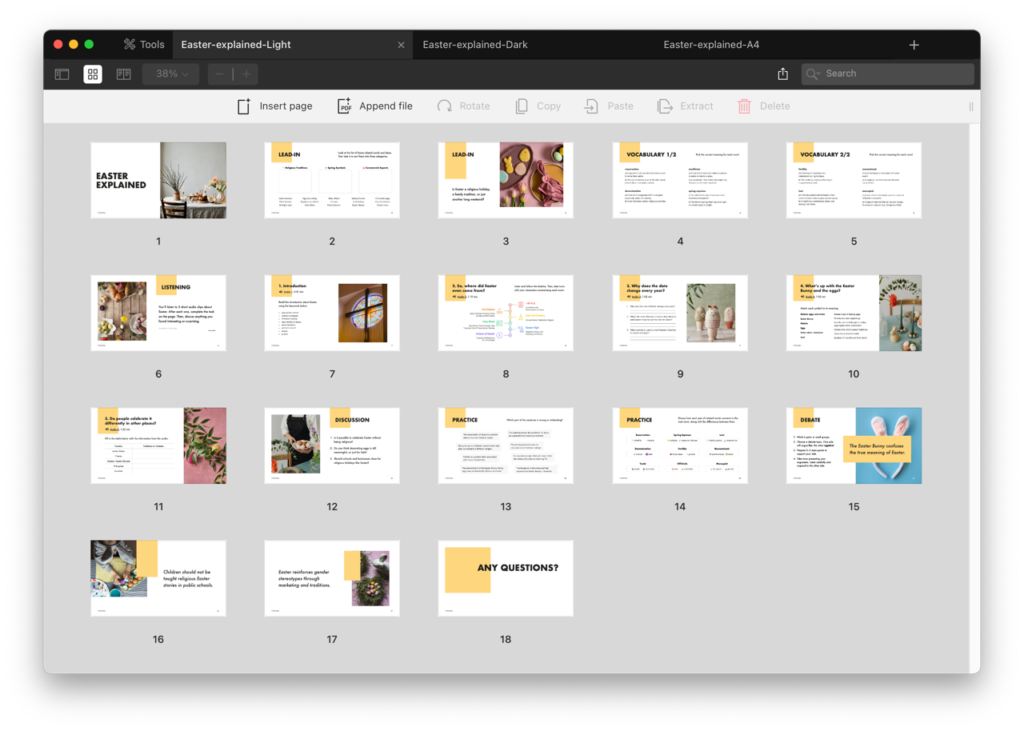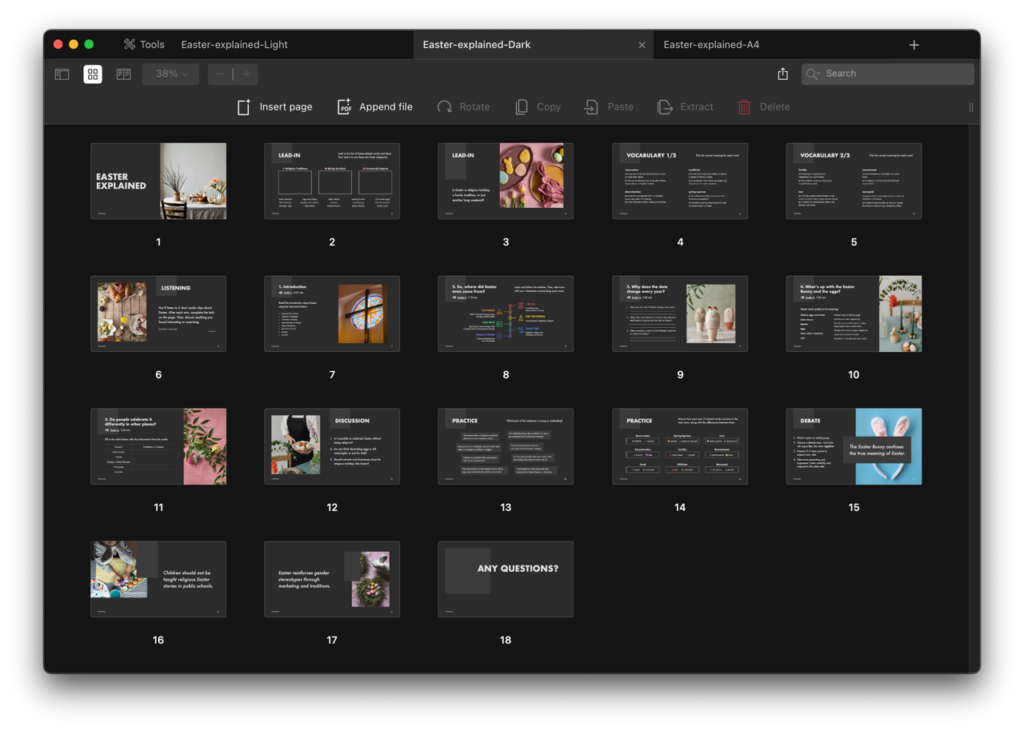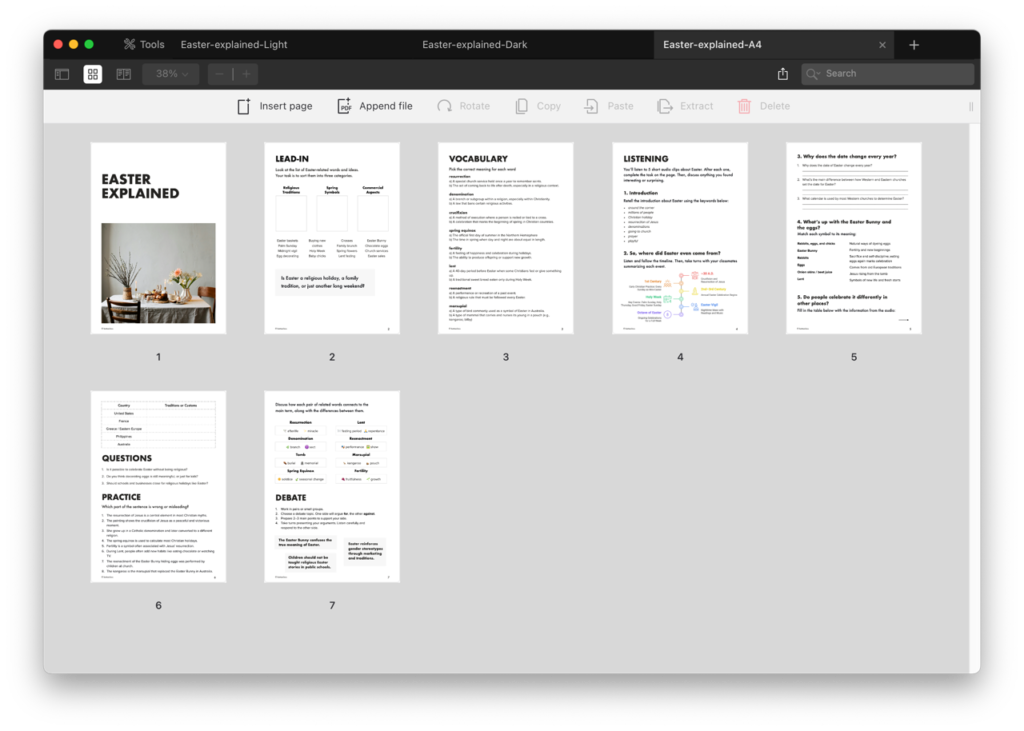Easter Explained

This C1 ESL lesson is based on five audio clips exploring different aspects of Easter. Students learn about the holiday’s religious roots, modern traditions, and how it’s celebrated in various countries. The lesson focuses on building listening comprehension, vocabulary, and critical thinking through follow-up tasks and discussions. It also includes vocabulary practice with words like resurrection, denomination, and reenactment. The goal is to help students engage with cultural and controversial topics using real-world language.
| Level | Vocabulary | Listening time | Lesson Time |
| C1 / Advanced | 8 words | 5 min | 60-80 min |



Vocabulary
- resurrection
- denomination
- crucifixion
- spring equinox
- fertility
- lent
- reenactment
- marsupial
Contents
- Lead-in 1
- Lead-in 2
- Vocabulary
- Audio 1-5
- Discussion
- Practice 1
- Practice 2
- Debate
Lead-in
The lesson begins with a sorting task where students fill in three categories: religious traditions, spring symbols, and commercial aspects. You can start with this activity or use the next page, which asks a general question: Is Easter a religious holiday, a family tradition, or just another long weekend?
Vocabulary
The vocabulary section is divided into two parts, with four words on each page. Students read the words and choose the correct definition. Help them with any unfamiliar terms, and ask them to make example sentences if needed.
Listening, Discussion
This lesson is based on five short audio clips. After each clip, students complete a task on the page. The first clip introduces Easter, the second explains its origins, the third covers why the date changes, the fourth focuses on the Easter Bunny and eggs, and the fifth explores how Easter is celebrated around the world. Each section includes a different activity—matching, answering questions, summarizing events, or using keywords. Once all tasks are done, use the final discussion page to go deeper with three follow-up questions.
Practice
In the practice section, the student students need to read eight sentences and they have to identify which part of the sentence is wrong or misleading and then they have to correct it. They’re not grammar mistakes mostly parts which don’t make sense or maybe some collocation errors in the next practice, part of the students need to discuss how each pair of the related words connect to the main term and explain the differences between them and the war in total And two suggested words for each one
Debate
The debate section is the final part of the lesson. Students work in pairs or small groups and choose one of three debate topics. One side argues for the topic, the other against. Each group prepares key points to support their side and then presents their arguments to the class.



